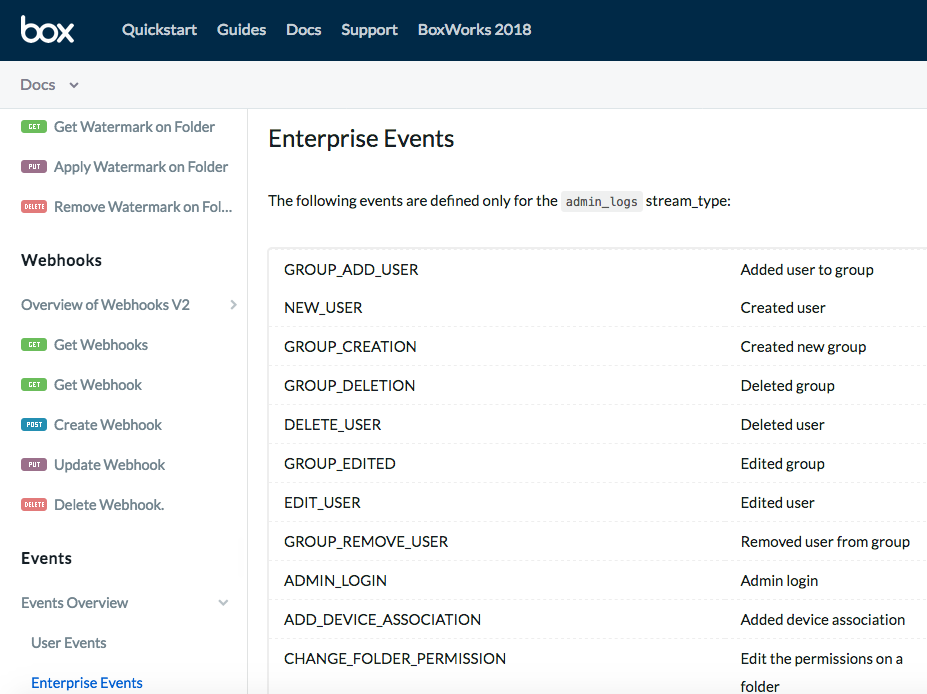We have been documenting the variety of event types offered by different API platforms we are profiling as part of the Streamdata.io API Gallery. When we come across API platforms that have begun offering webhooks to help satisfy the real-time need of their platform consumers, we usually record the event types in use by each platform. These are the types of events that occur, things like new users, payments, and other types of events that are happening around a platform, it’s APIs, and resources that are being made available. Most of the event types are pretty straightforward and directly related to the adding, updating, and removing of resources via APIs, however on the more mature platforms, who are further along in their journey, we are beginning to see other types of event-driven architecture emerge.
 Once you start looking under the hood of the event-driven architecture that is emerging across these platforms and processing the event types list available as part of their documentation, you begin seeing these more interesting events emerge. Things like 3rd party integration, security, malware, and terms of service events are present. When you look at platforms like the storage platform Egnyte, you see event types for things like SalesForce and Google Drive integration events, and they look for malware and other concerns around how documents are being put to work. Similarly, over at Box, you see them getting down to the legal details of their platform by offering terms of service, privacy, and service level agreement events as part of their enterprise event packages–going well beyond the normal event types you see across the event-driven architecture landscape.
Once you start looking under the hood of the event-driven architecture that is emerging across these platforms and processing the event types list available as part of their documentation, you begin seeing these more interesting events emerge. Things like 3rd party integration, security, malware, and terms of service events are present. When you look at platforms like the storage platform Egnyte, you see event types for things like SalesForce and Google Drive integration events, and they look for malware and other concerns around how documents are being put to work. Similarly, over at Box, you see them getting down to the legal details of their platform by offering terms of service, privacy, and service level agreement events as part of their enterprise event packages–going well beyond the normal event types you see across the event-driven architecture landscape.
All of this demonstrates for us what a journey all of this really is. We find that companies who have been doing APIs for a while and are finding success, tend to also offer webhooks. Then the companies who been doing webhooks for a while, tend to have invested more into event-driven architecture, where we begin seeing these more sophisticated event-types emerge. Helping developers tune into more of the meaningful, useful, and valuable events that are occurring via a platform. Going beyond just asking for resources, and becoming more informed when anything happens. Providing a buffet of event types for API consumers to subscribe to and tune into, helping keep them informed of whatever matters to them, and ignore the noise around everything else. A level of operation that takes time to achieve, define, and realize, demonstrating how important it is to just get going with your API efforts–as it all will take time to ripen and mature.
We will keep profiling the variety of event types we come across. We are looking at different ways of documenting what we find using the OpenAPI and AsyncAPI specifications. To help document, then standardize how event types are being defined, and share more stories around the common event-driven architectural patterns that are emerging across the landscape, and within specific industries. We just wanted to showcase what we are coming across as we profile the landscape, and point out that event types are becoming more precise and specialized. Painting a picture of the evolution that is occurring across the API sector, as part of the move towards a more event-driven approach to delivering digital resources across the growing number of applications being delivered. Helping us, and our customers tune into where everything is headed when it comes to operating in a digital world.



